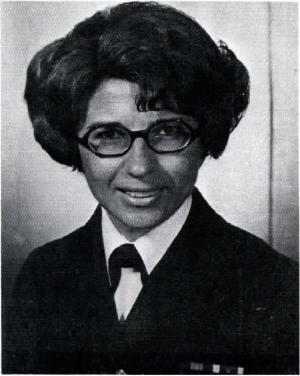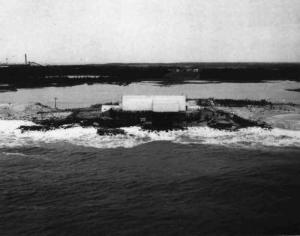The period of tension between the United States and the Soviet Union known as the Cold War brought new challenges for the American military. Soviet guided- and ballistic-missile submarines had the potential to attack important areas of the United States.
To track and defend against these vessels, the U.S. Navy developed the Sound Surveillance System, and used Fort Miles as a program facility for almost 20 years. SOSUS technology was a closely guarded secret. In fact, the program’s existence was not declassified until 1991. To disguise their true purpose, the NavFacs were described as ocean research facilities.
In 1950, AT&T signed a contract with the U.S. Navy to create a surveillance system through its Bell Laboratories and Western Electric companies. The plan was to place hydrophones, or underwater microphones, where they could listen to what’s called the deep sound channel. This layer of the ocean conducts sound waves very efficiently across long distances. The hydrophones sent noise in the form of electrical signals through armored cables to special shore bases called Naval Facilities. At the NavFacs, hydrophone signals were sent to low-frequency analyzer and recorder devices. LOFARs displayed the signals as lines on paper, like a seismograph. Trained personnel could recognize the line pattern of a submarine and determine where it was located.
The first in this region was NavFac Cape May, established in 1955, but in March 1962, a storm destroyed the facility. The Navy sent any remaining equipment across the Delaware Bay to Fort Miles, and NavFac Lewes began operating two months later.
At its height, 149 people worked at NavFac Lewes: Eight officers, 125 enlisted personnel and 16 civilians. The headquarters, with offices, dormitories and a mess hall, were located in what is now the Biden Center. Battery Smith, a World War II gun emplacement, became an auxiliary building with workrooms and storage.
Battery Herring, another World War II emplacement, was expanded into the terminal building, where a 100-mile-long SOSUS cable came onshore and the hydrophone sounds were analyzed. Finally, the Navy constructed a transmitter building along what is now the Walking Dunes trail. It sent secret, coded data to other military assets for use.
As technology improved, fewer facilities were needed, and NavFac Lewes closed Sept. 30, 1981. During its 26 years of service, it won multiple Navy awards, including two Meritorious Unit Commendations.
NavFac Lewes was also the first SOSUS facility to have a female leader, with LCDR Margaret Anne Frederick taking command in 1977.
Although NavFac Lewes no longer exists, SOSUS continues as part of the Navy’s Integrated Undersea Surveillance System. The Fort Miles Museum is also actively working on exhibits featuring SOSUS and other Cold War operations.
For information on tours and events, go to destateparks.com/fortmiles.














.jpg)








































